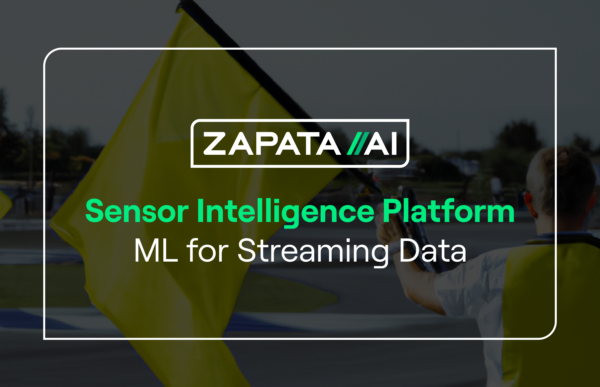The truth is that it’s never going to be easy to adopt game-changing innovations at enterprise scale, whether it’s AI or quantum computing. But, if you’re an enterprise IT decision-maker, the most important lesson I can share is that you can’t let your fear of failure prevent you from starting on the long road to adoption.
Dana Jones, CEO of RealPage, Inc. and Zapata Computing Board Director
Guest post by Dana Jones, CEO of RealPage, Inc. and Zapata Computing Board Director
Like many industries, life sciences was completely transformed by AI in the last decade. I should know: I had front row seats! Along the way, I picked up many insights and experiences that I now see as relevant to quantum computing’s real – though still nascent – journey, and I wanted to share them here.
When I was CEO of Sparta Systems, we pioneered the use of AI for quality management systems (QMS) in life sciences — solutions that ensure the safety and quality of drugs and medical devices. Our AI solution allowed drug and device makers to be much more proactive in addressing and preventing safety and quality issues in their manufacturing, thereby saving countless lives in the process.
Fast-forward to the present day: I joined Zapata’s board of directors just under a year ago because I believe quantum computing will have an even more transformative impact than AI. In the life sciences industry alone, quantum will benefit the entire value chain: from shaving years off the drug discovery process to optimizing the manufacturing and distribution process. But if there’s anything I’ve learned from the AI revolution, it won’t happen overnight.
The truth is that it’s never going to be easy to adopt game-changing innovations at enterprise scale, whether it’s AI or quantum computing. But, if you’re an enterprise IT decision-maker, the most important lesson I can share is that you can’t let your fear of failure prevent you from starting on the long road to adoption. In fact, to get an advantage, you will need to fail early and often.
This is particularly true with quantum: if you wait until the hardware is fully mature, your competitors will have already gone through the trial and error necessary to adopt the technology at enterprise scale, and it will be too late to catch up. Accepting the inevitability of failure is the only way to get ahead.
That said, there are many ways to fail, and if you can learn from the failures of the past, you can avoid the failures in the future. Having been in the trenches of the AI revolution, I see many parallels with the challenges companies are currently facing in adopting quantum computing. Below, I’ll share the biggest lessons I’ve learned from enterprise AI adoption that will help you succeed in adopting quantum.
Crawl, Walk, Run
When I was at Sparta, our AI was automating the process of escalating the highest risk quality and safety issues. At first, with the safety of their customers at stake, our end users were naturally a little hesitant to cede control of this critical process to AI. We had to start small to build trust. This meant augmenting what humans were doing and showing them that the AI was working as intended — and that it could make their jobs easier. Once we had a faithful few, it was easier to spur wider adoption across the organization.
Quantum computing adoption will be the same way. You can’t try and boil the ocean and apply quantum computing to everything all at once. Start small, achieve business results, and build from there. From the initial proof-of-concept to the prototype to a pilot application, you need to prove outcomes at each step to build trust and confidence.
From there, it will be easier to convince stakeholders to invest in wider quantum adoption. Once the value is clear and validated, you’ll be able to go from a push for adoption to a pull for adoption from stakeholders across the business.
Identify Use Cases
It’s important to note that quantum will not solve every problem. That said, quantum will provide a powerful advantage for very specific problems that can’t be solved by classical computers alone. This includes complex optimization problems, machine learning problems, and molecular simulations. The best use cases for your enterprise will depend on your industry and the bottlenecks you’re currently facing.
However, it’s not always immediately apparent which applications are worth pursuing. At Sparta, a big part of our business was helping our customers identify the best use cases for our AI solutions. Similarly, external quantum partners (like Zapata) can help you identify the best use cases for your organization, as well as which use cases are best for the near-term versus the long-term.
It’s important to start with a very specific, achievable quantum use case because, as I said before, you’ll need an early “win” to get further buy-in from your organization. The faster you can apply the tech in a narrow way, the faster you’re going to get a business benefit, and the faster you will get the internal traction to get the funding you need to solve bigger and better challenges.
Have an Executive Champion
R&D is an important part of discovering new applications, whether that’s with AI or quantum computing. But too often, R&D projects are done in a vacuum. They might yield interesting results in the lab, but when it comes time to scale the work into a business solution, they fail. The truth is that today’s enterprises are extraordinarily complex, and if you fail to work within that reality, your experiments will remain just that— experiments.
This is why it’s important to get buy-in and support from an executive who understands the business problem that can be solved with quantum computing, and who can pull the levers across the organization to scale applications from an R&D experiment into a practical business solution. This will take somebody who is willing to take risks, work collaboratively and learn. It should also be somebody who can pick a good external partner; somebody who has been through the adoption process for AI or another deep tech and knows what it’s going to take to succeed.
Remember, executives don’t want to hear about the next big tech thing. Their focus is on how they can solve their business problems and better serve their customers – both internal and external. This is going to be what motivates any successful adoption of quantum computing.
Develop Your Talent Pool
Of course, executives can’t do it alone. You’ll need a dedicated team to successfully adopt any new technology. With quantum computing being such an early stage field, the talent pool is relatively small and dwindling fast. According to Zapata’s recent report on enterprise quantum computing adoption, 51% of enterprises that have started on the path to quantum computing have already started identifying talent and building their teams. If you wait until the technology is mature, all the best talent will already be working for somebody else.
This means you’ll want to get started early on developing your talent. You can hire graduates fresh out of school, but there’s a huge difference between learning about quantum in the classroom and applying it to solve a real-world business problem. The only way to really learn is by trying and failing. Your quantum experts will also need to work with a cross-functional team of IT leaders, domain experts, and the business leaders mentioned earlier. External consultants can be a great way to augment your internal team as well and can bring expertise in solving similar challenges for other companies.
Build your Infrastructure
One of the biggest challenges with adopting quantum computing — and AI, for that matter — is integrating it with your existing IT stack. In fact, Zapata’s enterprise survey found that the complexity of integrating quantum computing with existing IT was the single greatest barrier to adoption. You can’t simply rip and replace: most businesses have systems in place that are decades old and still very effective. Organizations aren’t going to spend money to replace those systems — they rely on them to operate. So, any quantum solution needs to augment and interoperate with what’s already there.
Interoperability is critical because it’s still early days for quantum. You’ll want the flexibility to integrate new software and hardware components in the future without having to start over. For this reason, look for open platforms to build your quantum infrastructure, like Orquestra®. A lot of our success with Sparta and RealPage was a direct result of our open platforms, which could interoperate both with customers’ existing IT and future IT.
Again, Don’t be Afraid to Fail
Nobody said adopting quantum computing would be easy, especially at enterprise scale. You have to fail to try new things, but more importantly, you need to learn when you’ve failed, why you failed, how to course correct, and iterate from there. It’s going to be a long process, but the faster you can lean in and gain experience, the faster you can get to a place where you can gain value.
Dana Jones is a growth-minded CEO with a track record of successfully transforming global enterprise software companies into innovative market leaders. Prior to her current role as CEO of RealPage, Ms. Jones was President and CEO of Sparta Systems, where she innovated the use of AI for quality management systems in the life sciences. Her leadership successfully scaled the technology for widespread enterprise adoption, resulting in an acquisition by Honeywell.
[Note: this blog post is based on Dana’s recent appearance on The Quantum Pod, a podcast by Zapata Computing.]



